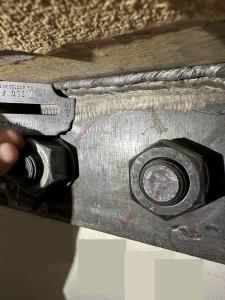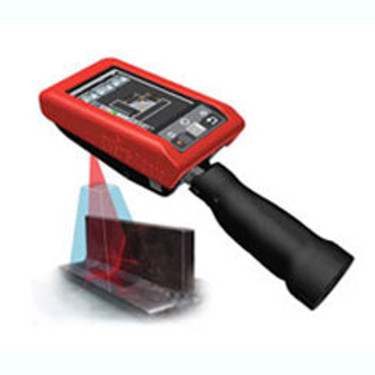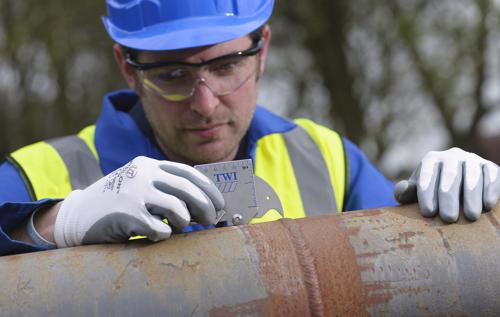A Comprehensive Overview to Welding Examination: Recognizing Requirements, Techniques, and Ideal Practices for Top Quality Assurance
Welding examination plays a pivotal duty in making sure the architectural stability and security of welded components, necessitating a comprehensive understanding of industry standards such as those developed by AWS and ASME. Numerous examination strategies, consisting of visual and ultrasonic screening, are used to find prospective problems that could jeopardize top quality. Applying finest techniques can substantially improve functional dependability and foster count on amongst clients. As we discover these essential aspects, it becomes noticeable that the ramifications of welding inspection prolong far past compliance, welcoming a better evaluation of how these processes form industry requirements and techniques.
Value of Welding Examination
Welding inspection plays a crucial function in making sure the honesty and safety of welded structures. It is a necessary procedure that validates that welds adapt predefined requirements, which is essential in various industries, including building, vehicle, and aerospace. By performing detailed inspections, prospective defects such as splits, incomplete fusion, and porosity can be determined early, avoiding disastrous failings that might cause mishaps or expensive repair work.
The relevance of welding examination expands past plain conformity with guidelines; it likewise promotes count on with stakeholders. Customers and governing bodies anticipate guarantee that the structures they count on are built to withstand functional stress and anxieties. Efficient welding examination methods contribute to lasting longevity and efficiency of the structures, ultimately leading to minimized maintenance prices.
Furthermore, welding inspection advertises a culture of top quality within organizations, urging adherence to finest methods and continuous renovation. By integrating examination processes into the welding process, companies can improve their credibility and develop themselves as leaders in top quality assurance. In conclusion, the relevance of welding evaluation hinges on its ability to guard lives, guarantee architectural reliability, and maintain industry criteria, making it an important element of welding procedures.
Key Market Standards
Making sure conformity with essential sector criteria is essential for maintaining the high quality and safety and security of welded structures. Numerous companies establish these requirements to advertise ideal methods in welding and examination - Welding Inspection Gilbert Arizona. Among the most acknowledged are the American Welding Culture (AWS) and the American Culture of Mechanical Engineers (ASME), which offer in-depth standards and specifications for welding processes and assessment standards
AWS standards, such as AWS D1.1 for architectural welding, synopsis requirements for products, layout, and screening to make sure the honesty of welds. In a similar way, ASME codes, including ASME Section IX, regulate the certification of welders and welding treatments, guaranteeing constant top quality in commercial applications. Globally, the ISO 3834 common stresses high quality demands for combination welding, supplying a structure for organizations to demonstrate compliance with worldwide finest methods.
Compliance with these standards not only boosts the integrity of bonded frameworks however also minimizes threats related to architectural failures. Additionally, adherence to industry criteria is usually a requirement for regulative approvals and can considerably affect job specs. Inevitably, understanding and executing these essential standards are essential for reliable welding evaluation and quality guarantee.
Evaluation Techniques Overview
Efficient welding assessment depends on a selection of methods designed to examine the quality and honesty of welds. These techniques can be generally classified right into harmful and non-destructive screening (NDT) methods. Non-destructive screening techniques, which are commonly preferred in the market, permit the assessment of welds without endangering the integrity of the material.

Amongst the most commonly used NDT techniques are visual inspection, ultrasonic testing, radiographic testing, and magnetic particle screening. Aesthetic examination is often the first step in the examination process, enabling assessors to determine surface flaws and analyze weld grain profiles.
Each technique has its very own benefits and restrictions, making it necessary for examiners to choose the most appropriate method based upon the particular demands of the project, the products entailed, and the urgency of the welds being examined. This careful option makes certain detailed evaluations and supports safety and security and top quality requirements in welding operations.
Usual Problems and Their Implications
A comprehensive understanding of common problems in welds is critical for keeping architectural integrity and safety and security in welded constructions. Welding issues can substantially compromise the mechanical buildings of the joint, bring about failures that can threaten both employees and devices.
Common flaws consist of porosity, which materializes as tiny gas pockets caught in the weld steel, deteriorating the overall structure. Splitting is another common concern, typically arising from rapid air conditioning or improper joint design, leading to anxiety focus that can lead to catastrophic failures. Incomplete fusion happens when the weld steel fails to correctly bond with the base product, creating powerlessness that might result in splitting up under lots.
Other noteworthy issues consist of undercutting, where the weld bead wears down the base steel, and slag incorporations, which can hinder the weld's strength. Each of these issues has specific ramifications; for circumstances, porosity can lower ductility, while splitting straight influences tensile toughness. Recognizing and understanding these problems during assessment is necessary for making certain and implementing corrective measures compliance with sector standards, inevitably safeguarding the architectural honesty of bonded settings up.
Ideal Practices for Quality Control
Carrying out finest methods for quality control in welding processes is essential for achieving optimum outcomes and lessening defects. One crucial practice is the facility of clear welding treatments that follow industry standards and requirements. These treatments ought to include thorough guidelines pertaining to product selection, joint prep work, and welding methods to guarantee consistency and top quality.
Routine training and certification of welding employees are likewise important. Competent welders who recognize the value of quality guarantee are most likely to generate sound welds. In addition, carrying out a robust assessment program, consisting of both non-destructive and visual screening (NDT), can help identify flaws early while doing so, permitting prompt article source corrective activities.

Last but not least, fostering click over here now a society of top quality within the organization urges workers to prioritize top quality in their job. By sticking to these ideal practices, organizations can improve the integrity of their welding processes, eventually causing enhanced item high quality and lowered prices connected with rework and repairs.

Conclusion
In final thought, welding evaluation plays a vital duty in making sure the integrity and safety and security of bonded structures. By implementing ideal methods, companies can improve reliability, decrease maintenance prices, and grow trust amongst clients, inevitably adding to successful welding procedures.
Additionally, welding assessment advertises a culture of top quality within organizations, motivating adherence to ideal practices and constant renovation. In final thought, the value of welding assessment exists in its ability to secure lives, make certain structural dependability, and promote industry requirements, making it an essential element of welding procedures.
Amongst the most recognized are the American Welding Society (AWS) and the American Society of Mechanical Designers (ASME), which give comprehensive guidelines and specs for welding procedures and examination criteria.
Eventually, understanding and carrying out these vital criteria are important for advice efficient welding assessment and high quality guarantee.
Reliable welding examination counts on a selection of techniques designed to evaluate the high quality and stability of welds.